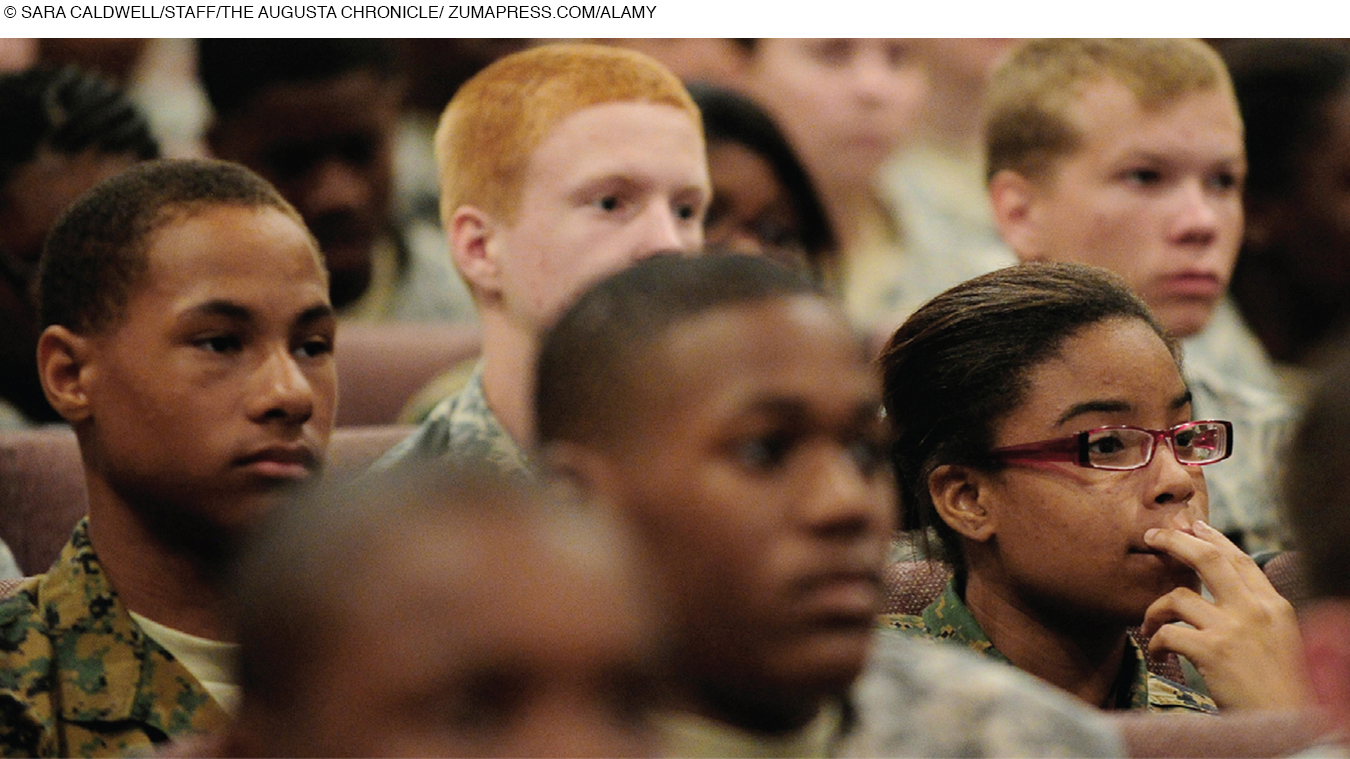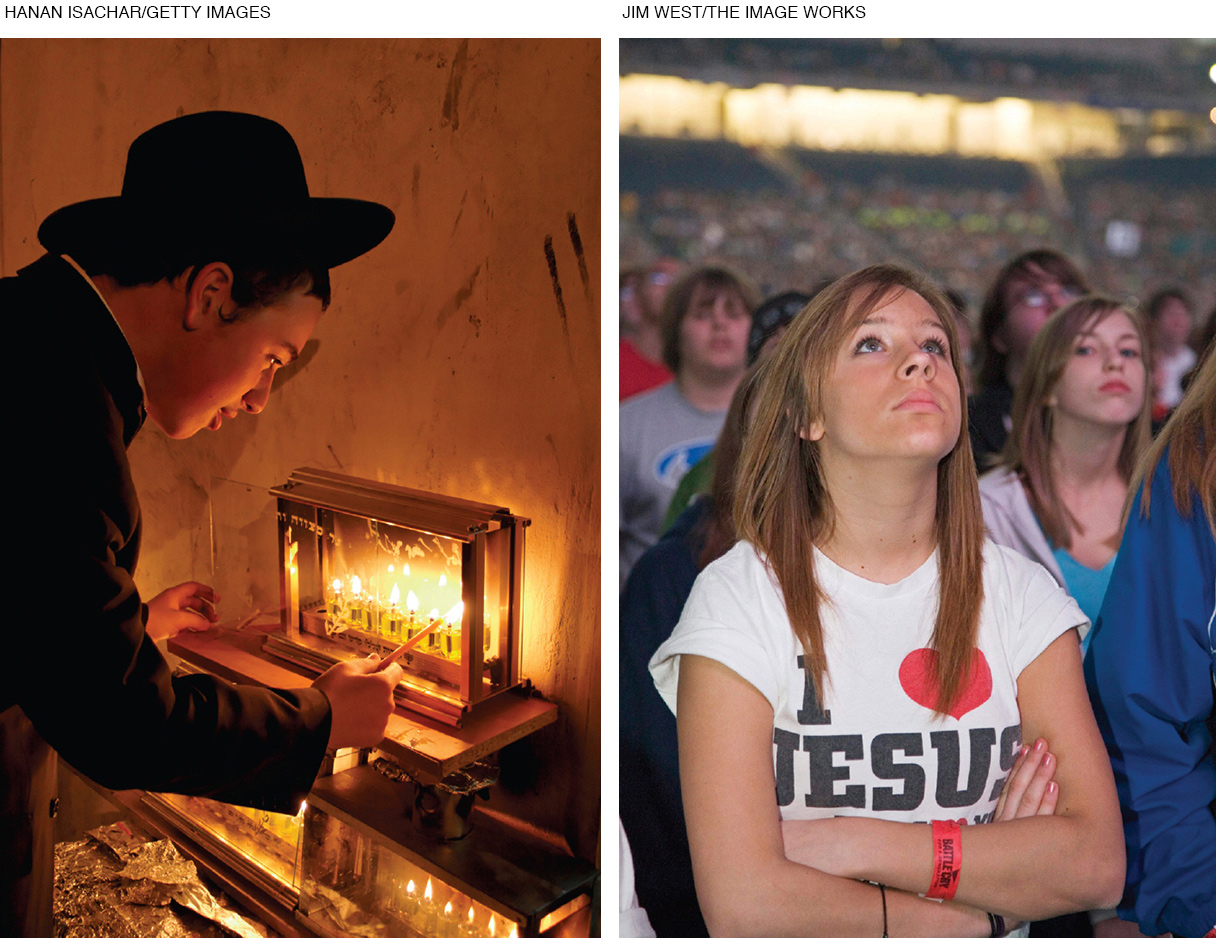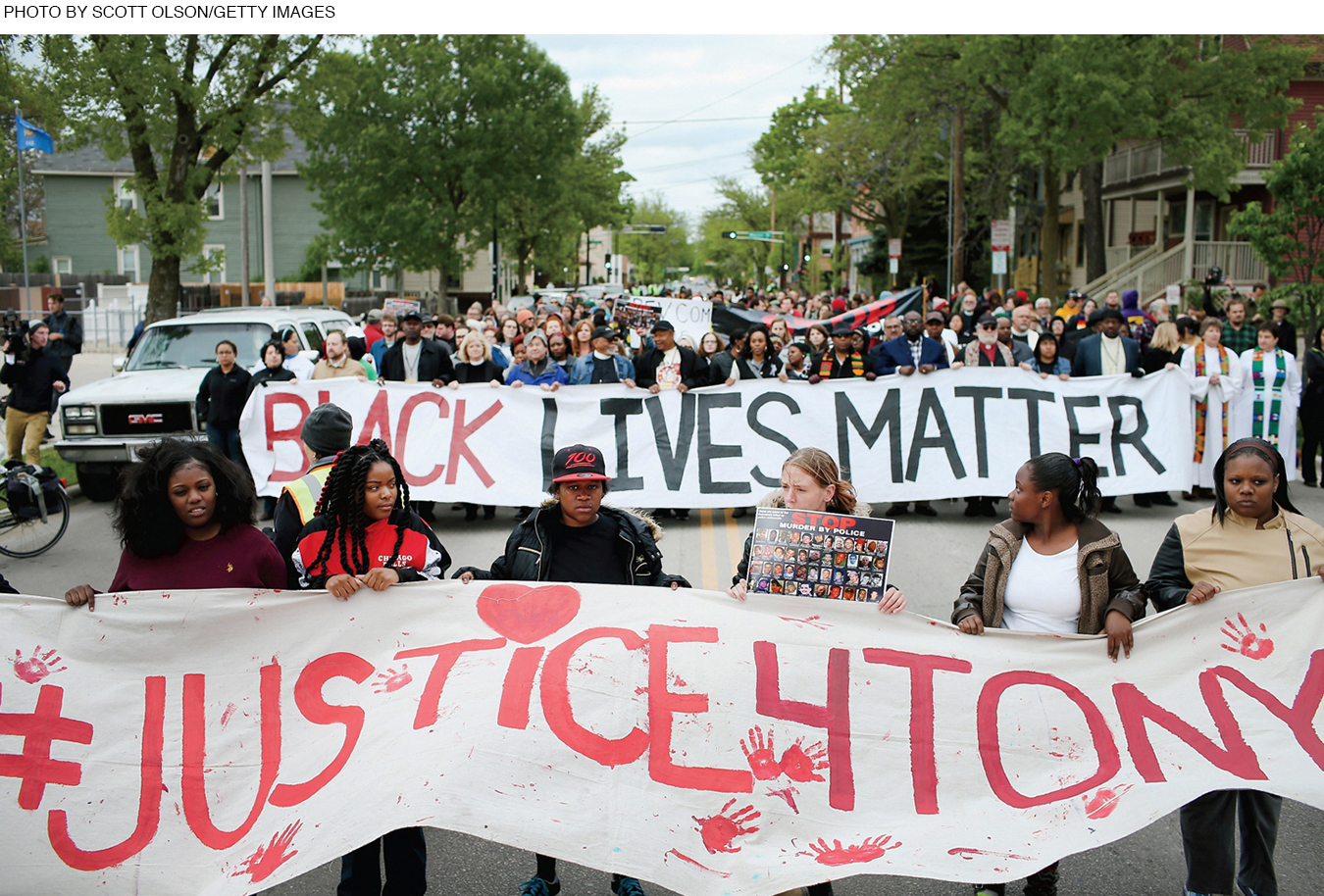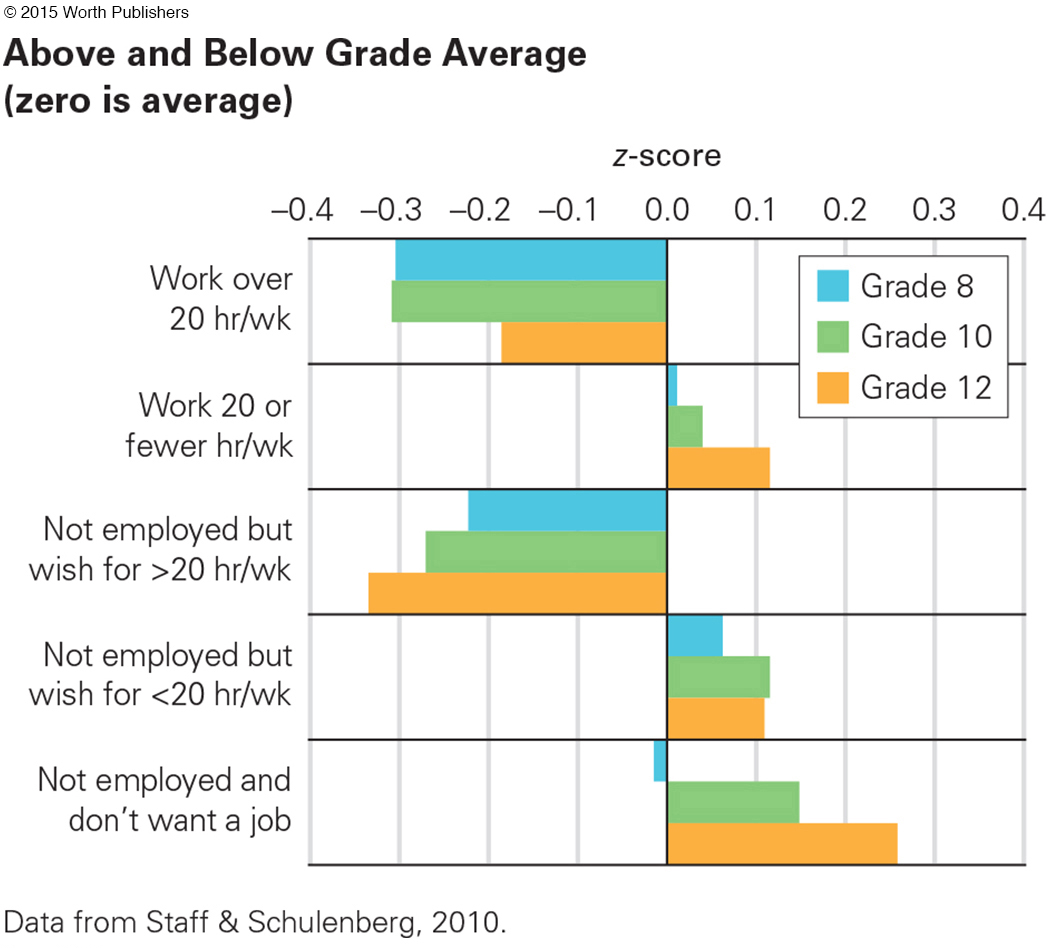Identity

Psychosocial development during adolescence is often understood as a search for a consistent understanding of oneself. Self-
identity versus role confusion
Erikson’s term for his fifth stage of development, in which the person tries to figure out “Who am I?” but is confused as to which of many possible roles to adopt.
identity achievement
Erikson’s term for the attainment of identity, or the point at which a person understands who he or she is as a unique individual, in accord with past experiences and future plans. This includes many identities—
According to Erik Erikson, life’s fifth psychosocial crisis is identity versus role confusion: Working through the complexities of finding one’s own identity is the primary task of adolescence (Erikson, 1968/1994). He said this crisis is resolved with identity achievement, when adolescents have reconsidered the goals and values of their parents and culture, accepting some and discarding others, forging their own identity.
The result is neither wholesale rejection nor unquestioning acceptance of social norms (Côté, 2009). With their new autonomy, teenagers maintain continuity with the past so that they can move to the future.
Each person must achieve his or her own identity. Simply adopting parental norms does not work, because the social context of each generation differs.
Not Yet Achieved
Erikson inspired thousands of researchers. Notable among them was James Marcia, who described and measured four specific ways young people cope with the identity crisis: (1) role confusion, (2) foreclosure, (3) moratorium, and finally (4) identity achievement (Marcia, 1966).
Over the past half-
role confusion
A situation in which people do not seem to know or care what his or her identity is. (Sometimes called identity diffusion.)
Role confusion is the opposite of identity achievement. It is characterized by lack of commitment to any goals or values. Erikson originally called this identity diffusion to emphasize that some adolescents seem diffuse, unfocused, and unconcerned about their future. Perhaps worse, adolescents in role confusion see no goals or purpose in their lives, and thus they flounder, unable to move forward (Hill et al., 2013).
foreclosure
Erikson’s term for premature identity formation, when a person adopts parents’ or society’s roles and values wholesale, without questioning or analysis.


Video Activity: Adolescence Around the World: Rites of Passage presents a comparison of adolescence initiation customs in industrialized and developing societies.
Identity foreclosure occurs when, in order to avoid the confusion of not knowing who they are, young people accept traditional roles and values (Marcia, 1966; Marcia et al., 1993). They might follow customs transmitted from their parents or culture, never exploring alternatives. Or they might foreclose on an oppositional, negative identity—the direct opposite of whatever their parents want—
moratorium
Socially acceptable way to postpone achievement. Going to college is a common example.
A more mature shelter is moratorium, a time-
THINK CRITICALLY: Since identity is formed lifelong, has your identity changed in the past five years?
Several aspects of the search for identity, especially sexual and vocational identity, take longer and have become more complicated than they were when Erikson described them. Fifty years ago, the drive to become independent and autonomous was thought to be “one of the key normative psychosocial developmental issues of adolescence” (Zimmer-
Four Arenas of Identity Formation
Erikson (1968/1994) highlighted four aspects of identity: religious, political, vocational, and sexual. Terminology and emphasis have changed for all four, as has timing. In fact, if an 18-
None of these four identities occurs in social isolation: Parents and peers are influential, as detailed later in this chapter, and the ever-
RELIGIOUS IDENTITY For most adolescents, their religious identity is similar to that of their parents and community. Few adolescents totally reject religion if they’ve grown up following a particular faith, especially if they have a good relationship with their parents (Kim-
Past parental practices influence adolescent religious identity, although some adolescents express that identity in ways that their parents did not anticipate: A Muslim girl might start to wear a headscarf, a Catholic boy might study for the priesthood, or a Baptist teenager might join a Pentecostal youth group, each surprising their less devout parents.
Such new practices are relatively minor, not a new religious identity. Thus, almost no young Muslim converts to Judaism, and almost no teenage Baptist becomes Hindu—

POLITICAL IDENTITY Parents also influence their children’s political identity. In the twenty-
For everyone, political views are heavily influenced by parents and their culture, with current teenagers somewhat less conservative than their parents (Taylor, 2014). Actually changing one’s political identity, if it occurs, is more likely in adulthood than adolescence. For example, Hillary Clinton’s parents were Republican and she was a Young Republican at age 17, not becoming a Democrat until age 21.
Question 10.1
OBSERVATION QUIZ
Do you see evidence of religious identity?
Yes. Notice the two marchers in liturgical vestments at the far right.

Related to political identity is ethnic identity, not a topic discussed by Erikson. Historical changes over the past few decades have made ethnic identity crucial for adolescents in the United States (Rivas-
Natasha is not the only one. In the United States and Canada, about half of all adolescents are of non-
Hispanic American youth must figure out their personal identity in relation to, for example, having grandparents from Mexico, Peru, or Cuba, and/or California, Texas, or New York. Many also have ancestors from both Spain and Africa. Similarly, European American teenagers must decide the significance of having grandparents from, say, Italy, Ireland, or Sweden. No teenager adopts, wholesale, the identity of their ancestors, but all must incorporate, somehow, their family history. Often ethnic identity blends into political identity.
VOCATIONAL IDENTITY Vocational identity originally meant envisioning oneself in a particular occupation. Choosing a future career made sense for teenagers a century ago, when most girls became housewives and most boys became farmers, small businessmen, or factory workers. Those few in professions were mostly generalists (doctors practiced family medicine, lawyers handled all kinds of cases, teachers taught all subjects).
Obviously, such early vocational identity is no longer appropriate. No teenager can realistically choose among the tens of thousands of careers available today; most adults change vocations (not just employers) many times.
Vocational identity takes years to establish, with specific skills and knowledge best learned on the job. Currently, vocational identity is dynamic and flexible: People eventually find a career or, even better, a calling that can lead to several jobs (Skorikov & Vondracek, 2011).
Although some adults hope that having a job will keep teenagers out of trouble as they identify as workers, the opposite may occur (Staff & Schulenberg, 2010). Research that controlled for SES found that adolescents who are employed more than 20 hours a week during the school year tend to quit school, fight with parents, smoke cigarettes, and hate their jobs—
Typically, teenagers with a paycheck spend their wages on clothes, cars, drugs, fast food, and music, not on supporting their families or saving for college (Mortimer, 2013). Grades fall: Employment interferes with homework and school attendance (see Figure 10.1).

SEXUAL IDENTITY The fourth type of identity, described by both Erikson and Marcia, is sexual identity. As you remember from Chapter 6, for social scientists sex and sexual refer to biological characteristics, whereas gender refers to cultural and social attributes that differentiate males and females. A half-
gender identity
A person’s acceptance of the roles and behaviors that a culture associates with the biological categories of male and female.
Thus, adolescence was once a time for “gender intensification,” when people increasingly identified as male or female (Priess et al., 2009). No longer. Erikson’s term sexual identity has been replaced by gender identity (Denny & Pittman, 2007), which refers primarily to a person’s self-
Gender identity often (but not always) begins with the person’s biological sex and leads to a gender role, but many adolescents (with the hypothetical reasoning that Piaget described) question aspects of gender roles. This often troubles their parents and grandparents.
Gender roles once meant that only men were employed; they were breadwinners (good providers) and women were housewives (married to their houses). As women entered the labor market, gender roles expanded but were still strong (nurse/doctor, secretary/businessman, pink collar/blue collar). Even today, women in every nation do far more child care and elder care than men. There is a “slow but steady pace of change in gender divisions of domestic labor . . . combined with a persistence of gender differences and inequalities” (Doucet, 2015, p. 224).
Now, gender roles are changing everywhere. The speed and specifics of the change vary dramatically by culture and cohort, which makes gender identity complicated for many youth. It is particularly complex for adolescents who feel their sex at birth is not their true gender identity.
Among Western psychiatrists in former decades, people who had “a strong and persistent cross-
This is not simply a change in words: A “disorder” means something is amiss with the individual, no matter how he or she feels about it, whereas in dysphoria the problem is in the distress, which can be mitigated by social conditions and/or by perception (Zucker et al., 2013).
No matter what gender identity a young person develops, every teenager experiences a surge of sexual hormones and most adjust to that. As Erikson recognized, although the hormones are universal, many adolescents are confused regarding when, how, and with whom to express their sexuality.
Some foreclose by exaggerating male or female roles; others seek a moratorium by trying to be asexual. Some who feel their gender identity is fragile aspire to a gender-
WHAT HAVE YOU LEARNED?
Question 10.2
1. What is Erikson’s fifth psychosocial crisis, and how is it resolved during adolescence?
According to Erik Erikson, life’s fifth psychosocial crisis is identity versus role confusion. The complexities of finding one’s own identity are the primary task of adolescence. He said this crisis is resolved with identity achievement, when adolescents have reconsidered the goals and values of their parents and culture, accepting some and discarding others, forging their own identity.
Question 10.3
2. How does identity foreclosure differ from identity moratorium?
Identity foreclosure occurs when, in order to avoid the confusion of not knowing who they are, young people accept traditional roles and values. A more mature shelter is the moratorium, a time-
Question 10.4
3. What has changed over the past decades regarding political identity?
Political party identification has weakened—
Question 10.5
4. What role do parents play in the formation of an adolescent’s religious and political identity?
For most adolescents, their religious identity is similar to that of their parents and community. Few adolescents totally reject religion if they’ve grown up following a particular faith, especially if they have a good relationship with their parents. Most adolescents question specific beliefs as their cognitive processes allow for more reflective, less concrete assumptions. There is no “crisis of faith,” per se, unless unusual circumstances create it. Parents also influence their children’s political identity. More adults in the twenty-
Question 10.6
5. Why is ethnic identity complicated for many young North Americans?
About half of all U.S. and Canadian adolescents are of non-
Question 10.7
6. Why is it premature for today’s adolescents to achieve their vocational identity?
Choosing a future career made sense for teenagers a century ago, when most girls became housewives and most boys became farmers, small businessmen, or factory workers. Today, there are tens of thousands of careers, and no teenager can be expected to choose among them. Vocational identity takes years to establish, and most jobs demand quite specific skills and knowledge that are best learned on the job.
Question 10.8
7. What assumptions about sexual identity did most adults hold 50 years ago?
Fifty years ago, Erikson and other theorists thought of the two sexes as opposites. They assumed that adolescents who were confused about sexual identity would soon adopt “proper” male or female roles. Adolescence was once a time for “gender intensification,” when people increasingly identified as male or female—
Question 10.9
8. Why is gender dysphoria, not gender identity disorder, described in the DSM-
The term gender identity disorder implied that something was wrong with the individual if a person felt that their sex at birth was not their true gender identity, whereas gender dysphoria describes the distress that one may feel at their biological sex.
Question 10.10
9. What behaviors might a teenage boy do if he has foreclosed on gender identity?
A teenage boy who has foreclosed on his gender identity might behave in an ultra-